There were 222 home runs hit in the 2013 season; 55 more than in 2012. The black bats did their job and brought the swagger back! There's more to it than just the hardware, though. Where those home runs came at brings just as much intrigue; especially with how frequently terms or phrases like "bandbox," "short porch," "Polo Grounds," "no man's land," "wind assisted," "impossible," "deep as shit," and "seriously, why would you build this?" get thrown around. Our use of home fields certainly lends a great deal of variation in style of play when it comes to the long ball - or small ball.
On the above chart, the gold bars show the total number of home runs hit at each field in 2013. The team colored section of each bar indicates the number of home runs hit by the home team. The eight fields that finished the year are included, as well as the two fields Westside and Belgian had to abandon midseason; these two are sequestered to the right hand side in the slightly darkened section. The parenthetical number below the field name notes how many games were played there during the 2013 season. So, the graph allows us to look at not only which fields were the most home run happy, but also which provided the best home field advantage.
| Field |
HR/G |
H:V Ratio |
| Wiff-Hill |
3.50 |
.04 |
| Reservation |
3.40 |
.48 |
| Make-Believe |
3.25 |
.77 |
| Swamp |
2.29 |
4.33 |
| Pervis Mem. |
1.71 |
7.00 |
| Holy Grounds |
1.58 |
.73 |
| Island |
1.57 |
.47 |
| Poolside |
1.00 |
9.00 |
| Wiffle Iron |
2.33 |
.08 |
| Warriors Den |
0 |
-- |
To no one's surprise - based on its 68' RF and 74' LF fence - the
The Field of Make-Believe surrendered the most ding dongs in WSEM, 39. What might be slightly surprising, though, as seen in the table to the right, is that it ranks third in home runs allowed per game. Also regarded as a launching pad,
The Reservation is second on both charts: giving up 34 HR, 3.4 per game. While short dimensions led to Make-Believe's high number, it was a steady stream of strong tailwinds that inflated the Reservations home run tally. In fact, 25 of its 34 HR given up came in just two series: when El Diablos and Holy Balls visited town.
Wiff-Hill Grounds only saw 8 games, yet still managed to give up 28 HR, fourth most in the league. This gives it the honor of edging out the Reservation for highest number of home runs per game, with 3.5. What's noteworthy here is how Wiff-Hill managed to play even smaller than its predecessor, the tiny
Wiffle Iron, which itself gave up 14 HR in just 6 games.
On the other end of the spectrum,
Poolside Park's 10 HR surrendered seems on the low side with the relatively short right field. Of course, you have to account for the Aces pitching staff in that number. You could also cite only 10 games played, however, Poolside still has the lowest HR/G: just 1.0. The next two stingiest fields are just 1/100th off in HR/G. They also both share a massive three-level backstop in center field. These near-twins,
The Island and
Holy Grounds, surprise nobody by being pitcher friendly parks: 90' lines, power alleys at 100+', and cavernous center fields.
Looking at the other number in the table, home-to-visitor HR ratio, and the colors on the bar graph, it is apparent that there is no real home field advantage when it comes to the power numbers. Five of the eight - or six of the nine - fields surrendered more than half of their dingers to visiting teams. Belgian's two fields were by far the most hospitable to guests, never bringing their selfish ratio above .08. The
The Island and
The Reservation are the next most guest-friendly environments. They both gave up just over 2 homes to visitors for every 1 hit by the home club.
Holy Grounds and
Make-Believe fair a little better, but still spot the journeymen about 1.5 HR for every 1 for the good guys.
Three fields truly claim the title "friendly confines" when it comes to the long ball, though. One of those is the
The Swamp. Led by Pearson's bat, the Ducks hit 4.33 HR on their home turf for every one given up: 81% of the home runs came off the bats of the home team. That's not the best advantage, though.
Pervis Memorial said adiós to 7 El Diablos long balls for every one by a visitor; giving the home colors a whopping 88% of the tally. Still not the best advantage. As mentioned earlier,
Poolside Park gave up a total of 10 home runs on the year. All but one of those were hit by the Aces! So, 90% of the souvenirs kids took home were given out by the good guys. Both rare and classy.
There we have it: a bit of everything from one end to the other for all types of players and observers. A few launching pads for fans of the long ball, a couple death valleys for old-school fans of manufacturing runs, and just enough home cooking to get your fill. I guess there's only one thing left to do: ask the question on everyone's mind.
"Who would have won that game if we'd played it somewhere else?"

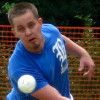


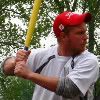
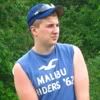




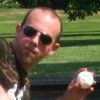

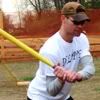
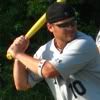
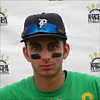

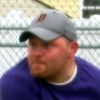
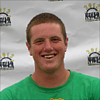
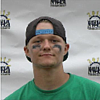






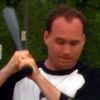

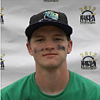

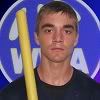
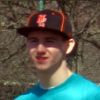














 #wiffleisweird
#wiffleisweird 

